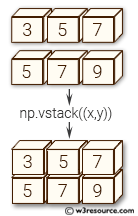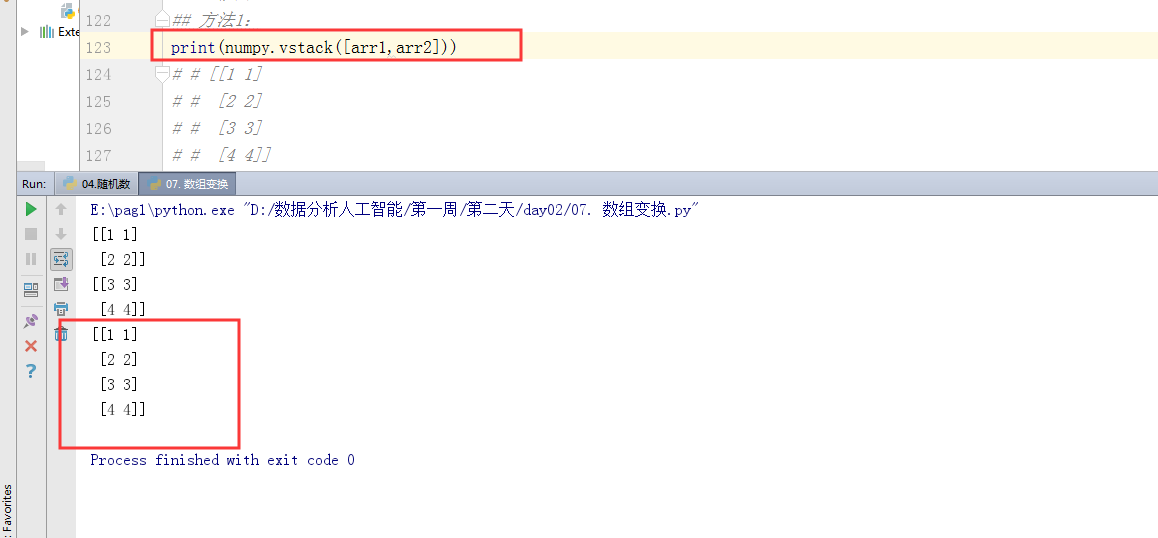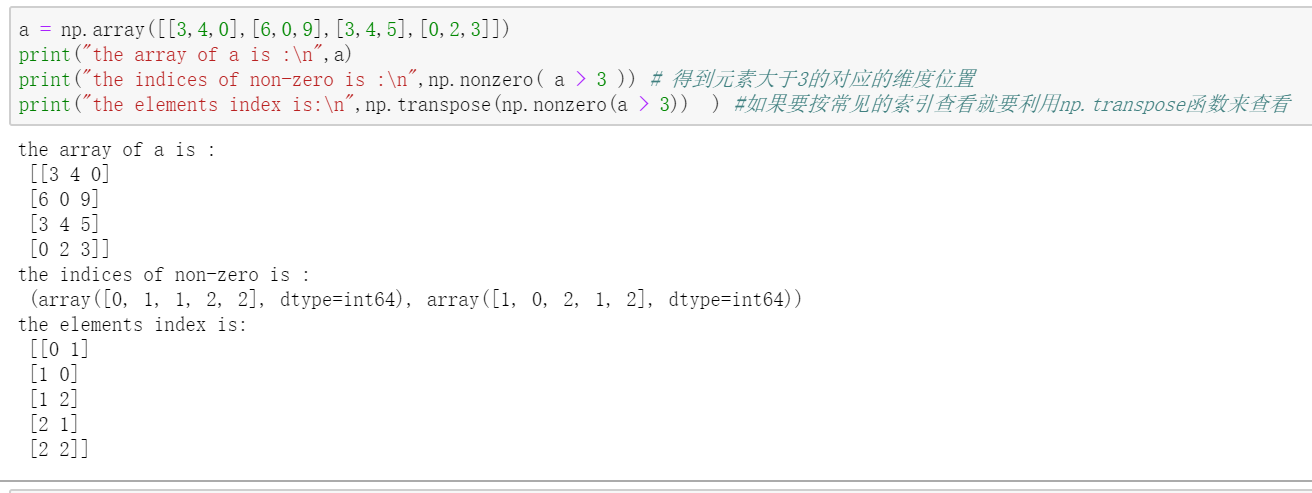
If it’s still unclear, I hope the following graphic can help you understand the logic behind np.vstack function. Similarly, the following example doesn’t modify the nested arrays and stacks the elements in array a first. np.vstack stacks ALL the elements in array a first before stacking elements in array b, the length of nested arrays is not altered. All the nested arrays in a and b have 1 element/column, the resulting array simply follows the trend and makes the resulting nested arrays also have 1 column. However, the next example could be a little bit confusing. Because both a and b are 1-dim array with 3 elements, the resulting array is just a vertically stack of them. xxxnp.vstack( np.arange(win), np.ones(win)).T 2 rollmat(np.linalg.inv(xxx.T xxx) (xxx.T) view.T) 0 rollmat is still identical (with one extra row because your rollnp stopped one row short of the last possible one) to rollnp (see below for graphical proof with my first answer. a = np.array() b = np.array() np.vstack((a,b)) # Result #, # ] np.vstack((sourceX, targetX)) trainY np.hstack((np.zeros(nbsource, dtypeint), np.ones(nbtarget. Numpy vstack, Numpy hstack, and Numpy concatenate are all somewhat similar. This page shows Python examples of numpy.vstack. dstack () it performs in-depth stacking along a new third axis. hstack () it performs horizontal stacking along with the columns. We can perform stacking along three dimensions: vstack () it performs vertical stacking along the rows.

Numpy vstack is actually one of several Numpy tools for combining Numpy arrays. NumPy implements the function of stacking. Let’s check out its capability when it comes. This function doesn’t need any other argument other than a tuple containing the sequence of NumPy arrays (ndarrays) you want to stack.

It’s essentially a data manipulation tool in NumPy. The numpy.vstack () function is used to stack arrays vertically, meaning that it will take a sequence of 1D or 2D arrays and combine them into a single 2D array. ⚡ It’s perfectly fine for input arrays to have different numbers of nested arrays, as long as all the nested arrays are of the same size. NumPy vstack is a tool for combining together Numpy arrays. If you try to vertically stack 2 arrays with different number of columns, you’ll get ValueError. This is because NumPy array requires all the nested arrays to have the same size. np.vstack stacks arrays vertically, and the number of columns of input arrays must be the same.
Numpy .vstack how to#
In this article, we’ll look at how to stack arrays exactly.
Numpy .vstack code#
The code examples and results presented in this tutorial have been implemented in a Jupyter Notebook with a python (version 3.8.3) kernel having numpy version 1.18.Np.vstack is a function in NumPy module used to stack arrays in sequence vertically. With this, we come to the end of this tutorial. Here we stacked two 2d arrays of shape (2, 4) vertically resulting in an array of shape (4, 4).įor more on the numpy vstack() function, refer to its documentation. You can also vertically stack two 2D arrays together in a similar way. Here we vertically stacked a one-dimensional array of length 4 with a 2D array of shape (2, 4) resulting in a vertically stacked array of shape (3, 4). Now let’s stack a 1D array with a 2D array vertically. data np.vstack((ranknp.ones((1,2)), (rank+.5)np.ones((1,2)))). Similarly, you can stack multiple arrays, just pass them in the order you want as a sequence. Here we concatenated three arrays vertically. For example, let’s stack three 1D arrays vertically at once. Just pass the arrays to be stacked as a tuple. You can also stack more than two arrays at once with the numpy vstack() function. The resulting array is a 2D array of shape (2, 4). Here, we created two 1D arrays of length 4 and then vertically stacked them with the vstack() function. Let’s stack two one-dimensional arrays together vertically. Let’s look at some examples of how to use the numpy vstack() function. It takes the sequence of arrays to be concatenated as a parameter and returns a numpy array resulting from stacking the given arrays. # tup is a tuple of arrays to be concatenated, e.g. It concatenates the arrays in sequence vertically (row-wise). You can use the numpy vstack() function to stack numpy arrays vertically. How to concatenate numpy arrays vertically? This function continues to be supported for backward compatibility, but you should prefer np.concatenate or np.stack. Take a sequence of arrays and stack them vertically to make a single array.

In this tutorial, we will look at how to use the numpy vstack method to vertically stack (or concat) numpy arrays with the help of some examples. vstack (tup) source Stack arrays in sequence vertically (row wise).


 0 kommentar(er)
0 kommentar(er)
